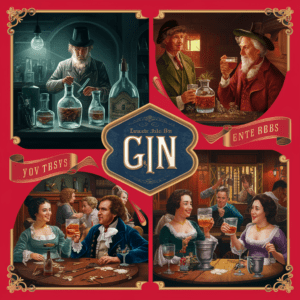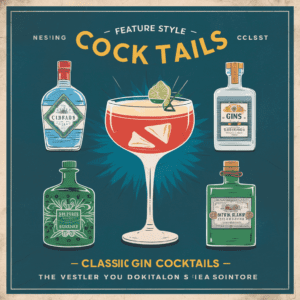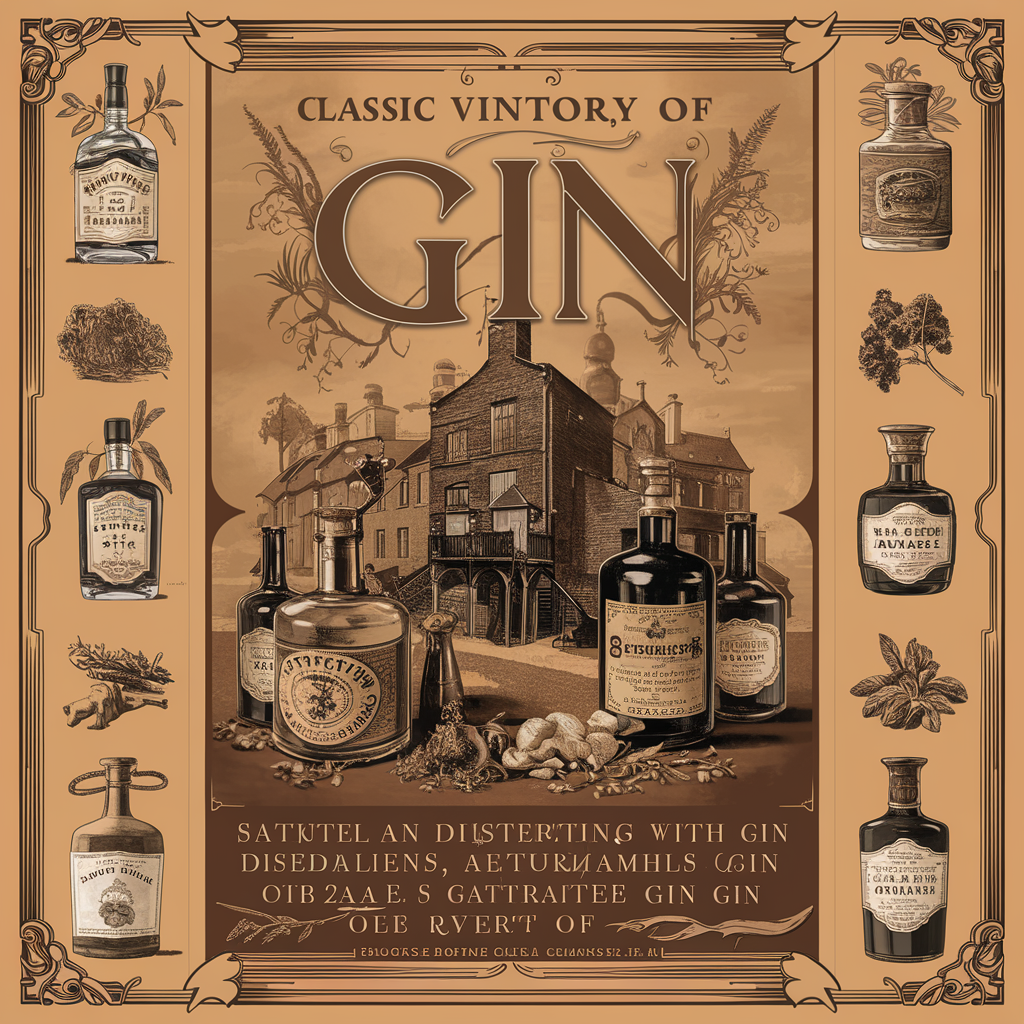Gin has a storied past that dances through centuries, blending tales of alchemists, sailors, and social revolutions into every drop. Imagine sitting in a dimly lit tavern in 18th-century London, where the chatter of dockworkers and nobility alike is punctuated by the clinking of bottles filled with a potent, clear liquid. This isn’t just any spirit; it’s gin—an elixir that has been both celebrated and vilified, driving social change and spurring innovative botanical blends that continue to captivate us today.
In exploring the history of gin, we unearth a narrative as complex and invigorating as the drink itself. Born from humble beginnings in the medicinal concoctions of medieval monks, gin has transformed over the ages, mirroring the cultural and economic shifts of the societies it touched. Whether it’s the infamous “Gin Craze” that swept through England or the high-end revival in contemporary craft distilleries, each era adds its own unique twist to the tale. Join us on this intoxicating journey through time, as we unbottle the secrets and reveal the fascinating history of gin, one sip at a time.
The Origins of Gin: From Medicinal Tonic to Popular Spirit

Gin’s roots can be traced back to the Middle Ages when it was first used as a medicinal tonic by monks. These early versions of gin were infused with various herbs and botanicals, believed to have healing properties. The word “gin” itself is derived from the Dutch word “jenever,” meaning juniper, which is one of the key ingredients in gin.
As time went on, the medicinal qualities of gin became less important, and its popularity as a recreational drink began to rise. In the 17th century, Dutch distillers started producing a more refined version of gin that was smoother and more palatable. This new style of gin quickly gained popularity in England, where it became known as “Dutch Courage.”
Gin’s Evolution in Europe: A Drink for the Masses
During the 18th century, gin underwent a significant transformation in Europe. It transitioned from being a luxury item enjoyed by the upper classes to becoming a drink for the masses. This shift was largely due to changes in distillation techniques and an increase in grain production.
In England, gin consumption skyrocketed during this period, leading to what became known as the “Gin Craze.” Gin was cheap and readily available, making it accessible to people from all walks of life. However, this widespread consumption also led to social problems such as drunkenness and crime.
The Gin Craze reached its peak in 18th-century England when gin shops outnumbered pubs and taverns combined. The government attempted to regulate gin production and consumption through various laws and taxes but with limited success.
One notable figure during this time was Thomas Dakin, who is often credited with pioneering the use of botanicals in gin production. His recipe, which included juniper, coriander, and citrus peels, laid the foundation for the modern London Dry style of gin.
Gin and Colonialism: Spreading Across the Globe
As European powers expanded their empires during the 18th and 19th centuries, they brought gin with them to far-flung corners of the world. Gin became a popular drink among British soldiers and sailors, who mixed it with tonic water to combat malaria.
In India, gin became synonymous with the British Raj and was a staple in colonial households. The creation of the iconic cocktail, the Gin and Tonic, can be attributed to this period when quinine-infused tonic water was used as a mixer to mask the bitter taste of malaria-preventing tonic.
Prohibition and Gin: A Dark Period for the Spirit
The early 20th century brought about a dark period for gin as Prohibition swept across the United States. The production, sale, and consumption of alcoholic beverages were banned, driving many distilleries out of business or underground.
However, this period also gave rise to illicit distilling operations known as “speakeasies,” where bootleggers produced their own versions of gin. These homemade gins often had questionable quality but were still sought after by those looking for a taste of forbidden pleasure.
The Revival of Craft Gin: Artisanal Techniques and Unique Botanicals
In recent years, there has been a resurgence in craft gin production around the world. Artisanal distillers are embracing traditional techniques while experimenting with unique botanical blends.
Craft gins often feature locally sourced ingredients and showcase the creativity and expertise of the distillers. From floral and fruity gins to those infused with exotic spices, there is a wide range of flavors and styles to explore.
Global Influence: Gin’s Impact on Cocktail Culture

Gin has had a profound influence on cocktail culture, with classic drinks such as the Martini, Negroni, and Tom Collins all featuring gin as a key ingredient. The versatility of gin allows it to be paired with a variety of mixers and garnishes, making it a favorite among bartenders and cocktail enthusiasts.
Additionally, the rise of craft cocktails has led to a renewed interest in gin-based concoctions. Mixologists are pushing the boundaries of flavor combinations, creating innovative drinks that highlight the botanical complexity of gin.
Gin Tasting Trends: Exploring Flavors and Pairings
Tasting events and gin festivals have become popular in recent years, allowing enthusiasts to explore different brands and flavor profiles. Attendees can sample gins from around the world, learn about production techniques, and discover new ways to enjoy their favorite spirit.
Pairing gin with various foods has also become a trend. From artisanal cheeses to delicate seafood dishes, there is a growing appreciation for how different flavors can complement or contrast with the botanical notes found in gin.
Gin as a Cultural Symbol: From Social Stigma to Luxury Connoisseurship
Gin has come a long way from its humble origins as a medicinal tonic. It has evolved into a cultural symbol associated with both social stigma and luxury connoisseurship.
In some societies, gin was once seen as the drink of choice for the lower classes or even associated with vice. However, in recent years, premium gins have gained popularity among discerning drinkers who appreciate the craftsmanship and attention to detail that goes into producing these spirits.
Conclusion: Gin’s Past, Present, and Promising Future
The history of gin is a fascinating journey that spans centuries and continents. From its origins as a medicinal elixir to its current status as a beloved spirit, gin has woven itself into the fabric of our culture.
As we raise our glasses to toast the enduring legacy of gin, let us remember the alchemists, distillers, and innovators who have shaped its history. And as we sip on our favorite gin cocktails, may we continue to celebrate this remarkable spirit and all the stories it holds within each drop.
